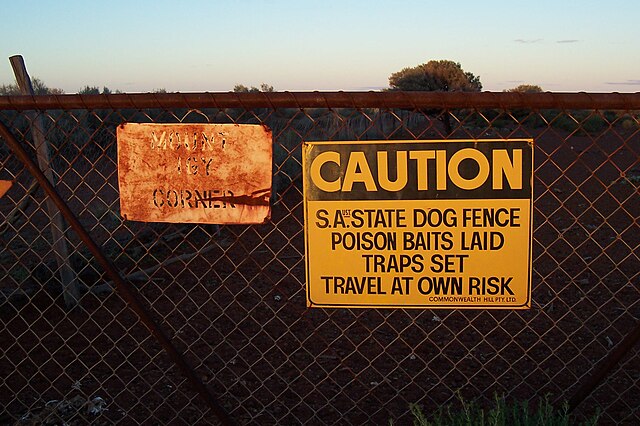A pest-exclusion fence is a barrier that is built to exclude certain types of animal pests from an enclosure. This may be to protect plants in horticulture, preserve grassland for grazing animals, separate species carrying diseases from livestock, prevent troublesome species entering roadways, or to protect endemic species in nature reserves. These fences are not necessarily traditional wire barriers, but may also include barriers of sound, or smell.
Xcluder pest-exclusion fence around perimeter of Maungatautari
Photo of the Rabbit-proof fence in northern Australia, taken in 2005
The Dingo Fence near Coober Pedy
The Dingo Fence or Dog Fence is a pest-exclusion fence in Australia to keep dingoes out of the relatively fertile south-east part of the continent and protect the sheep flocks of southern Queensland. It is one of the longest structures in the world. It stretches 5,614 kilometres (3,488 mi) from Jimbour on the Darling Downs near Dalby through thousands of kilometres of arid land ending west of Eyre peninsula on cliffs of the Nullarbor Plain above the Great Australian Bight near Nundroo. It has been partly successful, though dingoes can still be found in parts of the southern states. Although the fence has helped reduce losses of sheep to predators, this has been countered by holes in fences found in the 1990s through which dingo offspring have passed and by increased pasture competition from rabbits and kangaroos.
Dingo Fence on the 29th parallel south in Sturt National Park (right of fence), looking east from Cameron Corner
A portion of the dingo fence near Coober Pedy, South Australia
Dingo Fence at Igy Corner, SW of Coober Pedy
Dingo pups found just metres east of the Dingo Fence in 1976






